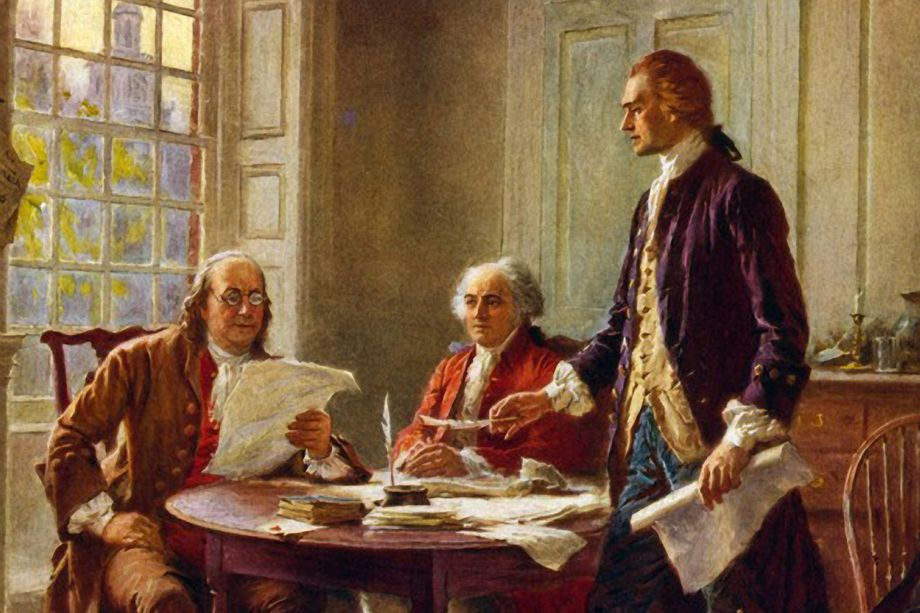On March 4, 1797, John Adams was sworn in as the second President of the United States. The nation had just bid farewell to George Washington, and while some Americans were unsure about what lay ahead, one thing was clear: Washington would not be returning. Adams, however, was a president full of surprises. Despite lacking executive experience—having never served as a military officer, governor, secretary, or even a congressman—his legacy as a revolutionary leader, scholar, and writer was undeniable. But who exactly was John Adams, and how did he become one of America’s founding fathers?

A Revolutionary at Heart
From 1775 to 1777, Adams was at the heart of the American Revolution. He played a crucial role in declaring independence in 1776, a move that many elites on both sides of the Atlantic weren’t yet ready to embrace. It’s no exaggeration to call Adams the “Father of American Independence.” His unwavering belief in independence, eloquence, and determination helped push the fledgling nation toward its ultimate goal: freedom from Britain. He nominated George Washington as the commander of the Continental Army and selected Thomas Jefferson to draft the Declaration of Independence. These pivotal decisions set the stage for the unity of the 13 colonies and the birth of a new nation.
Adams wasn’t just a political leader; he was also a diplomat. From 1777 to 1785, he served in Europe, forging critical alliances and negotiating the Treaty of Paris, which ended the Revolutionary War. In the midst of a financial crisis in the fledgling United States, Adams secured a loan from Dutch banks, saving the young nation from collapse.
A Diplomat’s Diplomacy
Adams’ years in Europe transformed him from an awkward American to a skilled diplomat. He was often out of place among European nobility, but he never shied away from defending the future of his country. During his time in Paris and London, Adams developed a deep respect for his French and British counterparts, but his heart remained loyal to the young United States.
One of the most remarkable moments in Adams’ diplomatic career came when he met King George III of England in 1785. The two men had been on opposite sides during the Revolution, yet now Adams stood before the king as a representative of a sovereign nation. Despite their past conflicts, the meeting was filled with mutual respect, even a shared sense of loss. The king expressed his sadness at the separation, but also welcomed the United States as an equal.
Adams, always the straight shooter, made no attempt to hide his emotions. He remarked, “Despite the ocean between us, we share a natural affection, a bond between our people, bound by the same language, religion, and shared bloodline.” The meeting was a poignant moment in history, symbolizing the changing tides between the old and new worlds.
Adams and Jefferson: The Unlikely Friendship
John Adams’ relationship with Thomas Jefferson is another fascinating chapter in his life. Despite their stark differences—Adams was short, brash, and passionate, while Jefferson was tall, quiet, and diplomatic—the two men forged a deep friendship. Their collaboration during the drafting of the Declaration of Independence laid the foundation for the United States, but it was their personal connection that truly stood the test of time.
In 1784, when Jefferson replaced Benjamin Franklin as the U.S. Minister to France, he and Adams rekindled their friendship. They shared countless evenings together, often discussing philosophy, politics, and their shared vision for the future of America. Their correspondence over the years became a testament to the enduring bond between these two visionary leaders.
But their friendship wasn’t without its tensions. Adams, a proud and sometimes jealous man, often found himself comparing his own contributions to Jefferson’s. He resented the admiration Jefferson received from others, particularly from his wife, Abigail. Yet, despite these personal squabbles, Adams and Jefferson remained friends until the end of their lives, even dying on the same day, July 4, 1826, the 50th anniversary of American independence.
A Complicated Presidency
Adams’ presidency was marked by challenges and controversies. His temperament, often blunt and outspoken, didn’t always endear him to his colleagues. His suggestion that the president should be called “Your Majesty” during early debates over presidential titles earned him the label of a monarchist. In reality, Adams was a staunch republican, but his comments were often misinterpreted, leading to a reputation he couldn’t shake.
As vice president, Adams felt marginalized. President Washington often excluded him from major decision-making, and Adams had to contend with the difficult position of presiding over the Senate without being allowed to participate in debates. He once famously referred to the vice presidency as “the most insignificant office that ever was,” a sentiment that would resonate with many vice presidents after him.
The Legacy of John Adams
John Adams’ life is a testament to the complexities of leadership. While not always beloved, his contributions to the American Revolution, diplomacy, and the early years of the United States were vital. His steadfast belief in the principles of liberty, democracy, and justice laid the foundation for the nation’s future. Adams’ relationship with Jefferson, his diplomatic achievements, and his role in securing American independence continue to inspire future generations.
In the end, Adams’ greatest legacy might be his honesty and his commitment to his country. Whether he was negotiating peace with Britain or struggling to find his place in the new American government, he remained steadfast in his principles. His story is a reminder that sometimes, the path to greatness is neither smooth nor easy, but it is often paved with resilience, conviction, and a willingness to fight for what one believes in.

No comments yet.